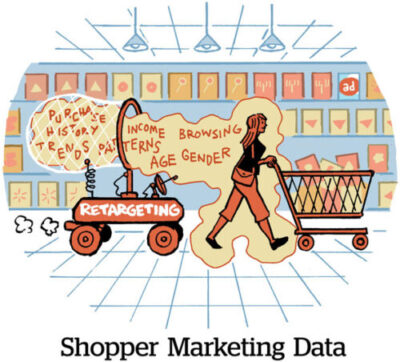Here’s today’s AdExchanger.com news round-up… Want it by email? Sign up here.
The Drizl Before The Storm
New retail media players raise difficult questions about particular use cases.
The latest platform, for instance, is Drizly Ads, launched by the Uber-owned alcohol delivery company.
On the one hand, booze brands need to find online customers. Targeting drinkers is regulated, and many ecommerce marketplaces don’t carry alcohol. But liquor marketers don’t need targeting to find alcohol buyers on Drizly.
“Drizly is one of the few partners where we have been able to bring a holistic campaign strategy to life,” says Emma de Szoeke, Moët Hennessy’s SVP of consumer insights, analytics and business growth, in a release.
The tripwire is when Drizly Ads is used by non-endemic brands. Could a Vegas resort use Drizly to find young people who drink? Sports gambling apps and crypto investment companies are major mobile advertiser categories nowadays. How might they use Drizly Ads?
Another can of worms are buy-now-pay-later services with ad networks and data sales. They’re likely an efficient way to find young people in bad financial straits.
Even Dollar General (which operates DGMN, the Dollar General Media Network) could be a mortgage or insurance proxy for down-market customers.
In short, the non-endemic opportunity in retail media is a field of landmines.
Can You Pay Attention?
Netflix’s worries about subscription revenue led it to cut costs and launch an ad business.
Still, lost in the doom-and-gloom coverage is the fact that Netflix remains the dominant player in streaming media and the zeitgeist.
Netflix subscription numbers ticked down this year, but it’s still gaining share of streaming media consumption, according to a blog post by the investment firm LightShed Partners.
Per Comscore, Netflix grew year-over-year from 25% to 29% of streaming consumption. Out of the daily top-10 streaming movies or shows over the first eight weeks of Q3 2022, an average of eight out of 10 appeared on Netflix.
Disney+, Paramount+, Peacock (the NBCUniversal streamer), HBO Max and Discovery+ also accounted for a combined $8 billion loss to their respective parent companies in the past year. Netflix made $5 billion profit in 2021.
Still, Netflix is coming to a rubber-meets-the-road moment. Netflix’s vision and that of many digital media companies is built on an assumption that winning overall consumer attention will translate to profitability. But what was true for Facebook wasn’t necessarily the case for, say, BuzzFeed or Huffington Post.
Netflix must prove its strength in content consumption means something.
Thus, ads.
Fresh Cuts
All is not well in Silicon Valley.
Meta, Alphabet and Snap are reducing headcount, freezing hiring and cutting internal projects, The Wall Street Journal reports.
Meta is shaving at least 10% in costs, including cutting jobs and pulling back consulting contracts.
Following CEO Mark Zuckerberg’s directive to reallocate resources to priority areas, Meta has reorganized its departments. Employees affected by this reorg have a 30-day grace period to land another role in the company or they’re cut loose.
In the past, only low-performing team members couldn’t find a new job in that 30-day period. But, increasingly, workers with strong performance reviews are failing to find new internal roles.
Meanwhile, Google has given 100 members of its startup incubator, Area 120, 90 days to find new positions.
These personnel cuts come at a time of sluggish growth for Big Tech following a runaway growth period and hiring costs shooting up during the pandemic.
Meta’s market cap has dropped by $685 billion since its peak last year, when it briefly eclipsed $1 trillion. Google shares dropped 27% over the same period.
Not to be overlooked, after growing its staff by two-thirds since 2020, Snap is now reducing headcount by 20%. Snap also folded Spectacles and Pixy, its device and camera hardware.
But Wait, There’s More!
Spotify’s Q2 results suggest ATT outweighs macroeconomic weakness. [Mobile Dev Memo]
Wayne Blodwell: I’m cynical when it comes to Retail Media. [blog]
IAB Tech Lab releases updates to SIMID 1.2 and VAST 4.3 for public comment. [release]
Twelve ad tech and data execs leading the cookieless revolution. [Ad Age]
Adam Singer: Music label lawyers undermine artists and cause a needless mess for social and audio platforms. [blog]
Vice News is turning to TikTok and Twitch to find new audiences. [Digiday]
You’re Hired!
WarnerMedia ad vet Ryan Spicer joins Atmosphere as the streaming network’s CRO. [Variety]
Frameplay names Google and Fandom alum Amy Venier as SVP of supply partnerships. [release]
Level Home taps Andrew Samson as CMO. [release]














